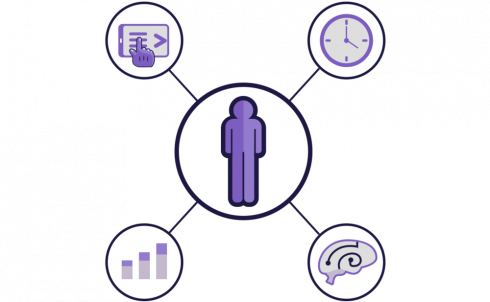
What sets Eggplant apart from other testing companies is that it approaches software testing from the user’s perspective.
“Our goal has always been around trying to help people make software that delights their users,” said Antony Edwards, CTO of Eggplant.
Eggplant helps a wide variety of companies test all sorts of solutions, from point-of-sale terminals to vending machines to banking websites. “We test the whole user experience and we can do this in a nice SaaS platform so that you can scale up and down easily,” said Edwards.
Edwards believes that if you’re doing true test-driven development, you cannot start with a testing approach that is centered on code rather than on the user. “What you should be validating at the end of your sprint is validating that you have delivered that benefit, have delivered that functionality, that story to the user. And the only way to do that properly is to come at it from the user perspective,” said Edwards.
Most software testing vendors work to analyze code and find a way to ensure that that code complies with the necessary specifications, Edwards explained. What Eggplant does when testing is that it ensures that the software is behaving correctly and doing the things that will make the user happy. “I think testers need to start looking at the customers first and not really care that much if we comply with this little bit of the spec, that little bit of the spec,” said Edwards.
“I definitely think that more testers need to be thinking, how can I drive the business outcome?” Edwards said. “And I have to say, as I talk to companies these days, I’m hearing more and more people thinking that way.” He believes this should be the starting point for testing these days.
The company’s testing product, Eggplant AI, uses AI, deep learning, and analytics to accelerate the process of testing. “We’ve always had that advantage in that we’re always testing from the user’s perspective, but the other thing that other people have issues with in testing is the amount of effort that you have to put in.”
As more and more teams move to DevOps and reduce the length of their project cycles, it is the testing aspect that falls behind and cannot keep up, Edwards explained.
By bringing AI and analytics into the process, Eggplant is able to automatically generate test cases. It allows people to create a lightweight model of their application, which can be used to create millions or billions of different test cases that provide complete, comprehensive coverage of the application.
Since a company cannot run billions of test cases every night, Eggplant AI also uses neural networks and deep learning to identify a couple thousand test cases that are the most likely to help find defects and improve the user experience.
The company also recently acquired NCC Group’s Web Performance division and its solution, which Edwards explained does real user and synthetic monitoring of systems. “The magic thing these guys do it they understand what your users are doing, how they’re behaving, what journeys they’re taking and the demographics of those people converting,” said Edwards.
They also understand the technical behavior of the website and are able to build a model that will show how that behavior influences the business outcome and customer satisfaction.
“And then of course the reason we think it’s a good match is that we then bring that back into the testing process. We’re already focusing on the user experience and now we’ve got a lot more data to understand what really matters,” said Edwards.
According to Edwards there are three steps organizations can take to make their testing process more user-focused.
First, they should use user analytics to focus testing efforts. For example, looking at the parts of the applications that users are using, determining what annoys them, and finding out their demographic are good areas to take a look at. “Currently, this kind of information doesn’t appear in any test strategy,” said Edwards. “It should.”
Second, they should test from the user’s perspective. The user only cares about what appears on the screen or what happens when they press a button. “Test through the eyes of the user,” Edward said.
Finally, test objectives should be redefined as increasing user satisfaction and business outcomes instead of as covering requirements.
“I’m seeing more and more testers saying what we can really offer, we know what good looks like, we can get information about the customers, and we can be making sure that the new releases they’re doing every week or two weeks are going to be a net benefit to customer satisfaction rather than reduction,” said Edwards.






